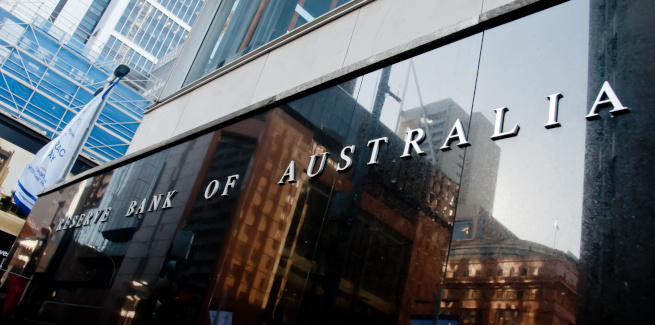In minutes released from the Reserve Bank of Australia’s (RBA) latest monetary policy board meeting, the central bank observed that the outlook for household consumption remains uncertain amid subdued wage growth and high levels of household debt, which have been compounded by the continued fall in residential property values.
According to modelling from AMP Capital, household wealth is set to fall by 10 per cent from current levels over the next one to two years as home prices continue to fall.
Senior economist at AMP Diana Mousina added that the projected fall in household wealth is set to double the savings rate.
“Based on our expectations of a 10 per cent fall in household wealth, the saving ratio is expected to roughly double to over 5 per cent over the next one to two years,” she said.
The RBA noted the impact of the “wealth effect” on its monetary policy outlook, stating that recent trends have defied its expectations.
“Growth in consumption was expected to be supported by an increase in growth in household disposable income,” the minutes read.
“However, there continued to be considerable uncertainty around the outlook for consumption given the environment of declining housing prices in some cities, low growth in household income and high debt levels.”
The RBA added: “Dwelling investment was expected to subtract from growth in output over the forecast period and, unless pre-sales volumes started to increase, this decline could be sharper than currently expected.”
The publication of the RBA minutes coincided with the release of new residential property data form the Australian Bureau of Statistics (ABS), which reported that over the December quarter of 2018 (three months to 31 December), residential property prices fell by 2.4 per cent across Australia’s capital cities.
The sharpest quarterly decline was in Sydney (3.7 per cent), followed by Melbourne (2.4 per cent), Melbourne (1.1 per cent), Perth (1 per cent), Darwin (0.6 per cent) and Canberra (0.2 per cent).
Hobart and Adelaide were the only capital cities to report increases, with values rising by 0.7 per cent and 0.1 per cent, respectively.
On an annual basis, residential dwelling values dropped by 5.1 per cent, driven by a 7.8 per cent decline in Sydney and a 6.4 per cent decline in Melbourne.
ABS chief economist Bruce Hockman observed: “Australia’s two largest cities continue to lead the fall in property prices. These falls follow a period of solid growth, where prices in Sydney rose 68 per cent and Melbourne rose 54 per cent, over the five years to December quarter 2017.”
Mr Hockman added: “While property prices are falling in most capital cities, a tightening in credit supply and reduced demand from investors and owner-occupiers have had a more pronounced effect on the larger property markets of Sydney and Melbourne.”
Also analysing the ABS data, senior manager at BIS Oxford Economics Angie Zigomanis warned that while price falls are most pronounced in Sydney and Melbourne, market conditions in Brisbane, Perth and Darwin are showing signs of a sharper downturn.
“It’s been a mixed bag across the other markets, although with the 1.1 per cent decline in the Brisbane index in the quarter also concerning given that prices have been flat for most of the year,” he said. “There is a danger that prices could fall further.”
He added: “Weak economic and employment conditions, and an excess dwelling supply, remain a factor in the Perth and Darwin markets. Without a light on the horizon in these markets in 2019, prices are likely to continue to fall.”
However, Mr Zigomanis expects Sydney and Melbourne to continue to “bear the brunt” of subdued investor demand.
“The other markets have not had the same exposure to investors or issues with affordability, which points to prices holding up better.
“Nevertheless, the decline in investor demand will impact across the board, while rising supply is also having an impact across most markets, and any prospect for price rises in the other capital cities will remain limited, with small falls in some markets still possible.”
The ABS data reported that, in total, the value of Australia’s 10.3 million residential dwellings fell by $133.1 billion to $6.7 trillion over the December quarter, with the mean price of dwellings in Australia dropping to $651,100.
Housing downturn is ‘overstated’
Despite mounting concerns over the fall in dwelling values, global chief economist at CBRE Group Richard Barkham said that the outlook for Australia’s property market “remains positive”.
Speaking at CBRE’s Annual Market Outlook event, Professor Barkham said: “I would say, if you look at prices per square foot, Australian housing prices are not out of line globally, so you should not overstate the downturn in the housing market.”
However, the economist acknowledged that Australian economy has a greater exposure to the construction market than its global peers but noted the tools at the disposal of government and regulators to help manage imbalances.
“[Australia’s] share of construction as a percentage of GDP is relatively high, so the downturn in the housing market feeds through into construction,” he said.
“However, if you look at the Australian economy, you have plenty of monetary policy options, you can cut interest rates and the government balance sheet is extremely healthy.”
He added: “It seems to me that there are headwinds for the Australian economy, and it does need to rethink its place in a de-globalising world but, nevertheless, the outlook is reasonably good.”
[Related: Length of housing slump approaching historical levels]
 ;
;
